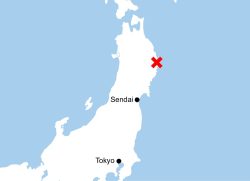No-Confidence Motion against Hyogo Governor: Saito Must Not Make the Wrong Decision
16:00 JST, September 22, 2024
The governor bears a grave responsibility for the long-term stagnation and turmoil in the administrative affairs of the local government, which supports the lives of local residents. He should accept the will of the prefectural assembly and promptly make a decision regarding his governorship.
The Hyogo prefectural assembly unanimously passed a motion of no-confidence against Gov. Motohiko Saito. The governor must resign or dissolve the assembly within 10 days. If he fails to do either of these things, he will automatically lose his job.
After the vote, Saito did not state his intentions, saying only, “I will think about it carefully.” The fact that all the assembly members with the right to vote on proposals, including the budget, pushed through a vote of no-confidence is extremely serious. If Saito stays in his post, it is unlikely that progress will be made on the administrative matters of the prefecture.
If the governor chooses to dissolve the assembly, it will be the first time for such a thing to happen for a prefectural government. Dissolving an assembly is a power granted to the heads of local governments under the Local Government Law, but it is intended to be used in such circumstances as a policy-related conflict between the assembly and the head of a local government.
In Hyogo, however, the issue was not policy but the assembly’s judgment that the governor is not fit for the job. Dissolving the assembly would be completely unjustified. The people of the prefecture will not accept the cost of a prefectural assembly election, which is said to be ¥1.6 billion.
Even if the prefectural assembly is dissolved, the governor would lose his post if another vote of no-confidence is passed after the next election. There is certainly nothing to suggest that the situation will turn in Saito’s favor.
If Saito wants to remain in office, he could resign and run in the next gubernatorial election to face the voters’ verdict. However, what good would it do to disrupt prefectural administrative affairs for the sake of self-preservation? The governor must not make the wrong decision.
The main reason that the motion of no-confidence was presented in the first place was that the governor and his aides continued to respond inappropriately to whistleblowing by a former senior prefectural official.
In March, the official sent documents to the media and other organizations describing such matters as allegations of workplace bullying by the governor. He later reported the same content to the section of the prefectural government that handles information from whistleblowers. In response, the prefectural government conducted its own investigation and took disciplinary action against the whistleblower. The man died in July and is believed to have committed suicide.
The Whistleblower Protection Law prohibits any disadvantageous treatment of whistleblowers for the claims they make, as well as any investigative action to identify them.
However, the prefectural government failed to handle this case as whistleblowing after the official brought the allegations. Instead, the then deputy governor and other officials identified the man at the governor’s instructions and started an investigation that was almost an interrogation. The deliberations of the special committee set up under Article 100 of the Local Government Law made it clear that the prefectural government and the governor had ignored the purpose of whistleblowing.
The prefectural office has received numerous phone calls criticizing the governor’s response to the situation, and a number of senior officials have resigned or taken a leave of absence. As the head of the local government, Saito should know what action to take for the sake of the prefecture and its residents.
(From The Yomiuri Shimbun, Sept. 22, 2024)
"Editorial & Columns" POPULAR ARTICLE
-

Artificial Intelligence Expands Possibilities for Foreign Language Learners
-

Build Intellectual, Physical Strength, As Well As Communicative Power / Japan Should Move from Beneficiary to Shaper of World Order
-

Global Economy in Turmoil: Prevent Free Trade System from Going Adrift / Risks to Financial Markets Must Be Heeded
-

Japan-China Strain Set to Persist as Beijing Officials Self-Interestedly Bash Tokyo; Takaichi Unlikely to Back Down
-

French and German Ambassadors to Japan Call for Democracies to Unite in Defense against Russian Disinformation
JN ACCESS RANKING
-

As Chinese Tourists Shun Japan, Hotels and Stores Suffer
-

Osaka-Kansai Expo’s Economic Impact Estimated at ¥3.6 Trillion, Takes Actual Visitor Numbers into Account
-

Japan Govt Adopts Measures to Curb Mega Solar Power Plant Projects Amid Environmental Concerns
-

BOJ Gov. Ueda: Highly Likely Mechanism for Rising Wages, Prices Will Be Maintained
-

Economic Security Panels Debate Supply Chains, Rare Earths; Participants Emphasize Importance of Cooperation Among Allies




















